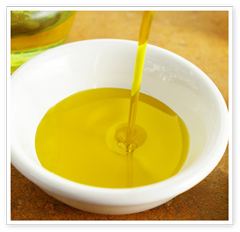
More than half of olive oil users say choosing an olive oil is confusing because they aren’t sure what’s important, with only 25 percent considering themselves “very knowledgeable” about olive oil, according to a new study conducted by the North American Olive Oil Association (NAOOA).
Currently only four in 10 American consumers use olive oil, accounting for approximately 15 percent of retail sales volume compared to other cooking oils.
“There remains a lot of work to be done to help make olive oil a mainstay in kitchens across the U.S.,” said Eryn Balch, executive vice president, NAOOA, based in Neptune, N.J. “The nation’s top food and nutrition experts have embraced the health messages about olive oil already. Now we hope they’ll be a key part of addressing consumer confusion, debunking myths and fostering a better understanding of olive oil’s taste, versatility and well-documented health benefits.”
Several myths around olive oil persist, including recent headlines touting new testing standards for olive oils produced specifically in California, which lack scientific rigor and confuse consumers, according to the NAOOA, which has long fought for uniform and scientifically sound olive oil testing to benefit all producers and assure consumers of authentic, quality olive oil. The NAOOA petitioned the Food and Drug Administration (FDA) and supported recently updated USDA standards, and it continues to collect hundreds of samples directly from store shelves each year for full purity testing at independent laboratories certified by the International Olive Council (IOC), the leading global authority on olive oil research and standards.
The California Department of Food and Agriculture (CDFA) recently approved new standards on the labeling and grading of olive oil produced in the state. California producers are seeking to differentiate their products from imported olive oils, which they say are often substandard, but the NAOOA asserts California’s standards “lack scientific rigor.” The new standards rely heavily on taste testing, which has given inconsistent results and has been debated as a biased grading tool, according to the association. California also doesn’t include purity testing, a critical foundation for quality monitoring. And although the standards took effect in September, the CDFA doesn’t have an implementation plan in place.
“We believe the health benefits of olive oil make it a great choice and are concerned that people are confused when there’s been great strides made by so many in the food and nutrition community to change habits and perceptions of olive oil,” said Sara Baer-Sinnott, president of Oldways, a Boston-based nonprofit inspiring good health through cultural food traditions and lifestyles. “We support NAOOA’s efforts to improve knowledge and push for universal quality standards.”
According to the NAOOA, many U.S. olive oil users lack knowledge when it comes to olive oil uses and health benefits, including:
- Only 6 percent know the color of olive oil is not related to the quality.
- A mere 15 percent understand light-tasting olive oil does not have fewer calories than other olive oils.
- Only one in four regular users knows that unlike wine, olive oil does not get better with age.
“Our aim is to help food and nutrition experts do what they do best – translate from the textbook to the table and debunk myths that persist, as well as be sure they are aware of new confusion from the distracting California regulations,” Balch said.
Beyond health information, the NAOOA is sharing tips with food and nutrition experts to help make it easier for them to inform the public about purchasing quality olive oils to fit cooking and baking needs, including deciding how olive oil will be used – whether to enhance flavor, for everyday grilling or sautéing, or as a baking ingredient.
The NAOOA conducted its 2014 National Attitude & Usage Study online in February among more than 2,000 oil users.
Participants must have used olive oil in the past six months, and been the primary/shared household grocery shopper and/or meal preparer.

